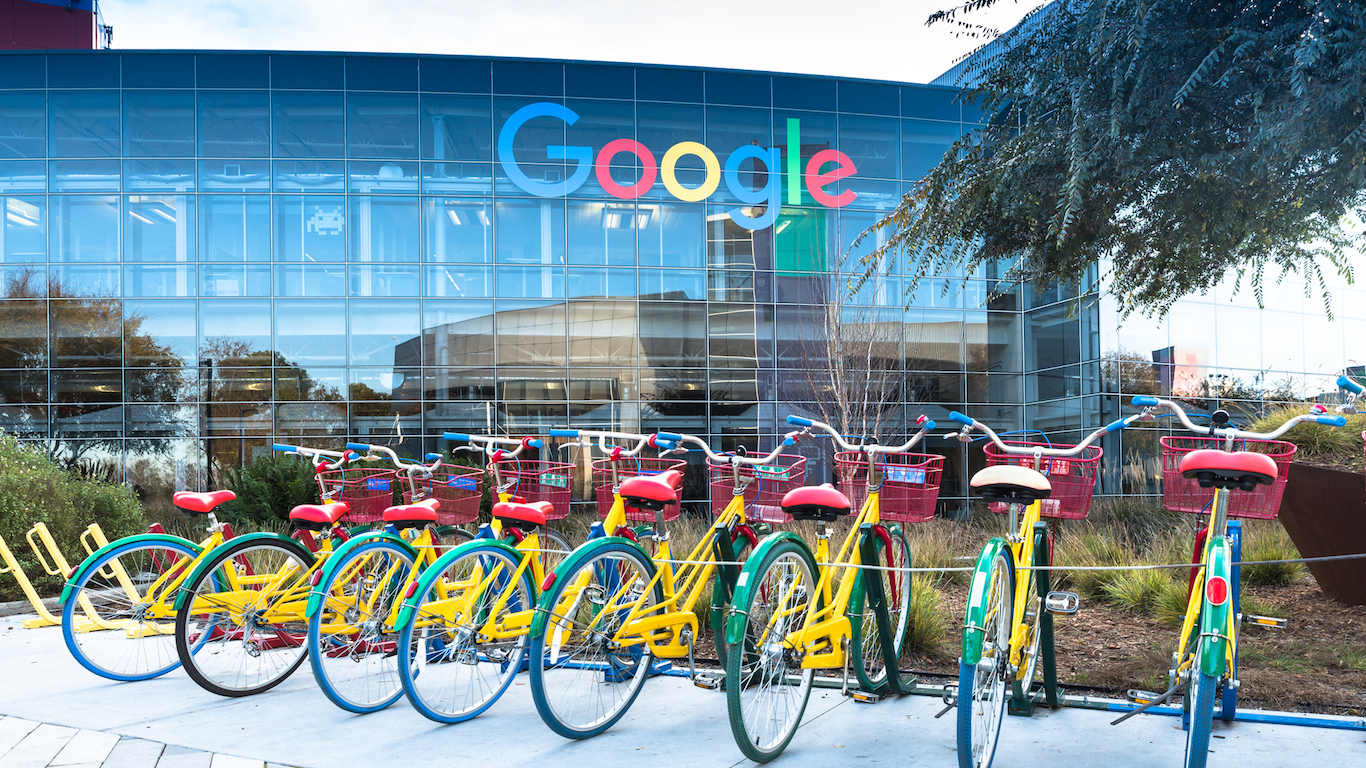
After U.S. markets closed Wednesday, Apple Inc. (NASDAQ: AAPL) reported results for its fiscal second quarter. Profit for the quarter reached $1.40 per share, nearly 30% higher than the consensus estimate for earnings per share (EPS) of $0.99. Revenue set a March-quarter record, totaling $89.6 billion. That follows a December quarter for which Apple posted revenue of more than $111 billion, an all-time record for the company.
For the first six months of Apple’s fiscal year, revenue has jumped year over year from $150.13 billion to $201.02 billion, an increase of nearly 34%. Companies the size of Apple just don’t do that. Or at least they didn’t until Apple, Microsoft, Google, Facebook and Amazon started showing the world how it’s done. Four of these five have market caps above $1 trillion, with Apple’s above $2.2 trillion, even after dropping around $100 billion in value since the beginning of the year.
While the Americas generated about 38% of Apple’s second-quarter revenue, Europe and China combined to contribute nearly 45%. iPhone sales generated almost 56% of total sales ($47.94 billion), a year-over-year percentage increase of 65%. Sales of Macs and iPads rose year over year by 17.2% and 17.0%, respectively, and Mac sales even posted a sequential increase of nearly 5%. Services, which includes the App Store, Apple Music and device repair services, rose by 26.6% to $16.9 billion.
Apple closed the quarter with cash, cash equivalents, and marketable securities valued at $204.37 billion. Operating cash flow in the quarter totaled $24 billion and Apple returned nearly $23 billion to shareholders in dividends and share buybacks. The company appears to be nearing its goal of being cash neutral sooner than anyone expected.
Following the company’s record-breaking December quarter, it seemed reasonable to ask how long Apple could keep up this growth pace. One analyst who had stuck out his neck a year ago and put a Sell rating on Apple stock still needed more convincing.
In April of last year, Goldman Sachs analyst Rod Hall dropped the firm’s rating on Apple from Neutral to Sell and lowered its price target from $250 per share to $233. Just last week, following Apple’s Spring Loaded event, Hall reiterated his Sell rating and lowered the price target to $83. After Wednesday’s report, Hall finally caved in:
We are upgrading our rating from Sell to Neutral after Apple posted another large beat and implied a raise vs. our June revenue expectations. Our original view that the iPhone cycle would disappoint in the midst of COVID was clearly wrong. Not only has Apple done better than we expected on iPhone during the cycle but Mac and iPad have also materially outperformed our forecasts.
“Materially outperformed” indeed. Apple’s stock has added 89% to its share price since Hall initiated his Sell rating. Along with the rating bump, Hall also raised Goldman’s price target on the shares to $130. Apple shares closed at $133.58 on Wednesday, before the company reported second-quarter results, and the stock traded up about 2.8% Thursday morning at $137.33.
Thank you for reading! Have some feedback for us?
Contact the 24/7 Wall St. editorial team.
 24/7 Wall St.
24/7 Wall St.


